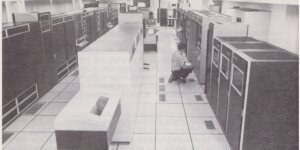
Lucio Soibelman, chair of the Sonny Astani Department of Civil and Environmental Engineering Department. Photo courtesy of USC Viterbi
The American Society of Civil Engineers (ASCE) Construction Institute selected Lucio Soibelman as the recipient of the 2017 Construction Management Award in recognition of his pioneering work applying big data research to construction and civil engineering management.
Soibelman, chair and professor of the Sonny Astani Department of Civil and Environmental Engineering, began his career by working in the construction industry with his father in Brazil, before running his own construction company for 10 years and eventually joining academia. Among his achievements in research, Soibelman developed prediction tools for construction project planning, as well as an automated organization process for the millions of documents and images created during each project. His work improved management, productivity and communication in the construction industry.
“When I started working in construction, I relied a lot on my father’s knowledge,” Soibelman said. “The issue is that he learned it by making mistakes for 30 years.”
Soibelman wanted to find a way to gain this knowledge base without needing decades of trial-and-error. To do so, he knew he would need data, and lots of it.
“Experience has a huge impact in the way that you plan. But, what changed with time and when I finished my PhD, I started realizing that there was a large amount of data from control system spreadsheets created during construction,” he said.
These spreadsheets keep track of services, timelines and who was involved. Soibelman believed that by analyzing this information, he could create models that would accurately estimate the amount of time needed to complete each stage of a project, while predicting potential hindrances, enabling managers to plan accordingly and stay on schedule. In the late 90s, he was given an opportunity by the U.S. Army Corps of Engineers in Fort Wayne, Ind. to put his theory into practice.
“They were building levee walls for protection from flooding,” Soibelman said. “They were building the project on four phases and had already built three… and all three previous phases were delivered behind schedule.”
They hoped Soibelman would be able to tell them why their plans kept going awry. Applying data mining tools to their records, he found that the main causes for delay were boulders found during the excavation of the foundation, followed by lack of equipment to remove the boulders and winter weather from having to push back construction. By scanning the construction site with ground penetrating radar to locate the boulders and plan their removal ahead of the arrival of the construction crew, they were able to finish the fourth phase on schedule.
“Data is out there. So, can we use the data to generate patterns and understandings?” Soibelman said. “If you get a hundred projects in a similar area, a similar climate and everything, and you start looking at all of them… by finding those patterns, you are able to eliminate those issues and start being more efficient.”
After developing predictive modeling methods, his research evolved from analyzing databases to optimizing data repositories.
During every construction project, millions of documents and images are uploaded to a database and shared between managers, lawyers, architects and builders. The massive amounts of files made finding what you were looking for very difficult, leading to errors during construction.
“It’s like your computer – sometimes you write an article and you don’t remember which folder it’s in and you waste an hour saying, ‘oh my god, where did I save that thing?’,” Soibelman said. “Now, imagine that your computer is accessed by a hundred-different people and everyone is uploading things. How do you find things? So, the structure has to be very organized.”
With aid from his students at the time, Carlos Caldas and Ioannis Brilakis, now both professors, Soibelman developed methods to classify and label documents and images using theories from library science and computer vision. For easy access, the files are then incorporated into a 3-D computer model of the building. By clicking on any component of the structure, all of the information about that particular object can be found.
This framework is used by companies all over the world and has been expanded for use beyond construction applications. For example, working with RedZone Robotics, Soibelman used an evolution of his image sorting software to find cracks on sewer pipes.
Soibelman’s outstanding contributions to construction management are evident in today’s project planning and data organization software. In honor of his achievements, the 2017 Construction Management Award, announced in mid-January, will be presented to him during a ceremony at the Construction Institute Summit in Anaheim, Calif. in March.
Published on February 6th, 2017
Last updated on March 10th, 2017








